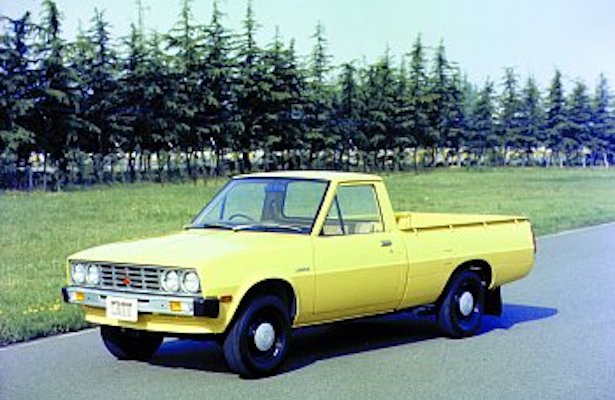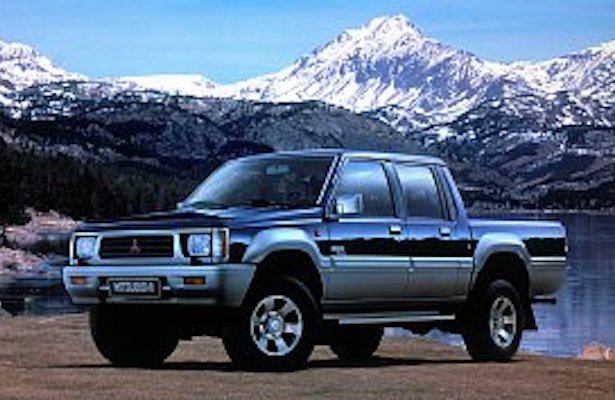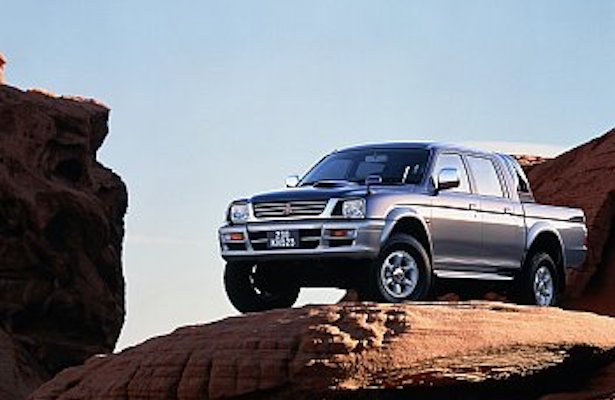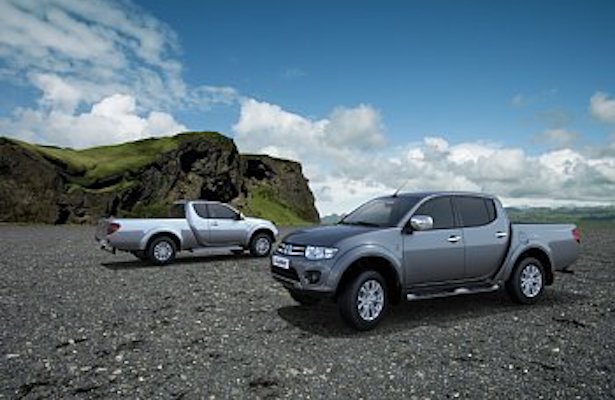
Mitsubishi Bakkie History
Mitsubishi Motors Corporation (MMC) celebrates 40 years of producing quality, reliable and durable pickup trucks (or bakkies) to customers across the globe. The Japanese automaker has always been one of the top brands and, five generations later, they are still highly regarded and certainly deserve their reputation.
The South African market is no exception as driving a pickup truck as an everyday run-around has become somewhat of a norm. It really shouldn’t come as a surprise considering the quality of vehicles Mitsubishi has produced over the years, but where did it all begin?
First Generation – 1978
The concept behind the first generation Mitsubishi was to provide a rugged, reliable and easy-to-drive 1-ton pickup. They wanted to manufacture a bakkie with similar levels of drivability, utility, comfort, and ride than a passenger sedan and they succeeded. It became a big hit in markets across the world as it was capable of taking on any type of surface while providing a comfortable ride.
North Americans had the choice of a 2.0-litre and 2.6-litre petrol engine while Japan and other regions only had the option of a 1.6-litre petrol engine. They did, however, make a 2.3-litre diesel engine for general exports. In 1980, Mitsubishi Motors added a 4×4 version to the range which became the foundation for modern Mitsubishi 4WD vehicles such as the legendary Mitsubishi Pajero.

1978 Mitsubishi Bakkie
Second Generation – 1986
March 1986 saw a big change in the exterior design as Mitsubishi introduced a new front grille, higher ride, bigger wheels among other detail changes. In addition, they also offered more variations and body types such as Single Cab, Club Cab and Double Cab where customers could choose between 2WD and 4WD drivetrains, 2.0-litre and 2.6-litre petrol engines as well as a 2.5-litre diesel. Mitsubishi produced approximately 1.1 million second-generation models at the Ohe Plant in Japan and the Laem Chabang Plant in Thailand.

1986 Mitsubishi Bakkie
Third Generation – 1995
The third generation Mitsubishi dates back to November 1995 where production started in Thailand. They revised the interior and exterior designs to give a more modern, distinctive and cutting-edge appearance. The new generation was a spacious five-seater comfortable enough as a family car while still suitable for commercial purposes.
A new 2.5-litre inter-cooled turbo-diesel engine and an “Easy Select 4WD” system vastly improved power and off-road performance while the interior comforts matched that of traditional passenger vehicles. They also added more equipment and safety features including a driver-side airbag, anti-pinch power windows and high-level brake lights. Mitsubishi produced more than 1 million third-generation pickup trucks which set the scene for what came next.

1995 Mitsubishi Bakkie
Fourth Generation – 2005 Triton/L200
Mitsubishi changed the entire model range in August 2005 and produced a total of 1 423 000 which they exported to about 150 countries. The 2005 Mitsubishi Triton forever changed the concept that pickup trucks were merely commercial vehicles. A newly-developed direct injection common rail diesel engine produced more power while achieving lower fuel consumption, reduced exhaust emissions and noise levels. At the time, the newly designed body also achieved among the highest level of safety.
Taking part in the Dakar Rally and other races established further superiority in terms of off-road 4WD performance. The range included Single Cab, Club Cab, and Double Cab with the choice of a 2.5-litre and 3.2-litre common rail diesel engine and 2WD or 4WD drivetrains.

2005 Mitsubishi Bakkie
Fifth Generation – 2014 Mitsubishi Triton
In 2014, Mitsubishi introduced the new 5th generation Triton with improved usability and durability for commercial use. It had a sportier feel that is easy and fun to drive, offers exceptional quality and comfort for every passenger. These are all the qualities that the new Mitsubishi Triton had realised which ultimately evolved into the ideal‘Sports Utility Truck’ (SUT).
They made improvements to the previous 2.5-litre turbodiesel and 2.4-litre petrol engines while adding a new 2.4-litre MIVEC turbodiesel for superior performance while achieving top-level fuel economy and lower emissions. For the first time, the pickup truck gets a 6-speed manual or a 5-speed automatic transmission with a sports mode.
Not surprisingly, the 4WD systems continue to develop with aplomb. The “Easy Select 4WD” system now has three positions (2H, 4H, 4L) for optimum traction to match all road conditions while the “Super Select 4WD-II” comes with an electronic actuator. There is a still a 2WD option which includes the standard “High Rider” model with the same ground clearance as the 4WD version for improved rough-terrain performance.

2014 Mitsubishi Bakkie
With five generations of pickup trucks, what’s next for Mitsubishi Motors?
According to Nic Campbell, General Manager at Mitsubishi Motors South Africa, “The Mitsubishi Triton is one of our most successful vehicles to date. When you look back at the development and changes over the past 40 years, it’s clear that each evolution was a direct result of customer needs and the changing perception of utility vehicles. Today, the Triton is an exceptionally luxurious vehicle with the tough ability that customers expect from a pickup, and it’s easy to see why it remains so popular with South African customers.”
“With 40 years of success to build on, it’s no surprise that consumers are eagerly awaiting the sixth generation of the Mitsubishi Triton. The official launch is set for November in Thailand, with the local launch date currently being determined based on worldwide production schedules. At least we can give customers a glimpse of what the future holds,” Campbell concluded.
If you’d like to be part of the successful evolution of the Mitsubishi Triton, book a test drive today and experience everything this true legend has to offer.

